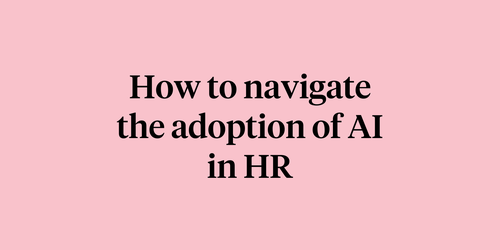
The secret to happy customers: Employee engagement

Written by

Content Marketing Lead, Culture Amp
The secret to happy customers? Happy employees. While that answer might seem simple, keeping your employees happy is often easier said than done. Not to mention that building a business case for employee engagement can be a difficult and, at times, daunting task.
Nevertheless, keeping employees engaged has become one of the top priorities among HR Leaders. We’ve teamed up with leading customer service software company Zendesk to see if engaged employees provide better customer service.
We compared customer experience metrics captured by Zendesk, like customer satisfaction, response and resolution times, and Culture Amp employee engagement data, to see how investing in employee engagement affects the customer experience. Unsurprisingly, our data revealed a positive correlation between high engagement and great customer service.
Here’s a closer look at what we found and how you can use this information to boost engagement and service at your company.
Companies with higher employee engagement scores have more satisfied customers
The biggest finding from our study was this: Companies with higher engagement scores had higher customer satisfaction scores.
We combined Zendesk’s customer satisfaction and support ticket data and Culture Amp’s employee engagement benchmarking data to see how engagement levels impacted the customer experience. Using this data, we discovered that companies with engagement scores above our benchmark scored 10% higher on customer satisfaction than companies below the benchmark. These companies with top-scoring engagement scores also had more engaged employees and 2 to 3 times more top performers than companies with poor engagement scores.
See for yourself:
| Engaged companies | Unengaged companies | Comparison | |
| Customer satisfaction score | 92 % | 83 % | +9 point |
| First response time | 260 minutes | 300 minutes | Less 40 minutes |
| First resolution time | 2000 minutes | 630 minutes | 3x longer |
| One-touch percent | 71 % | 89 % | 18 points lower |
| Ticket volume | 200 | 1400 | 14 % |
As the table above shows, engaged companies work on new tickets sooner and spend more time ensuring that tickets are resolved successfully than unengaged companies, leading to higher customer satisfaction scores.
Top-performing customer service representatives have higher engagement scores than their peers
Next, we looked into metrics specific to customer service agents to see if more engaged employees provide higher quality customer service. No surprise here: highly performing employees are more engaged.
Top-performing customer reps had higher engagement scores, quicker ticket response rates, and higher customer satisfaction scores than their lowly engaged colleagues.
| Top Performer | Low Performer | Comparison | |
| Engagement | 76 % | 71 % | Low performers are 5 points lower than highly performing employees |
| Customer satisfaction score | 98% | 82% | Low performers below the global 25th percentile, highly performing employees are in the 75th percentile |
| First response time | 60 minutes | 930 minutes | Low performers are greater than the global 75th percentile, highly performing employees are in the 25th percentile. |
| First resolution time | 1280 minutes | 1300 minutes | Both top and bottom performers are around the global median for resolution time. |
| One-touch percent | 55% | 82% | Low performers are lower than 25th percentile, highly performing employees are around the global median for one-touch percent. |
| Ticket Volume | 830 | 2600 | Low performers are above global 75 percentile |
Other studies, like this one from The Hay Group, have found similar results. They determined that highly engaged businesses were up to 43% more productive than companies with lower engagement. That means engaged employees are showing up to work ready to give it their all and–as highlighted by our data – giving better, faster service.
While our study clearly establishes that employee engagement has a substantial impact on customer experience, the real question is, how can companies foster a culture and work environment that engages employees?
How engagement surveys can increase employee engagement
A great place to start is engagement surveys. Engagement surveys are a type of employee survey that allows you to gain insight and collect feedback on what your employees like and what they’d like to see improved at your organization. When we looked at engagement survey data from top-performing customer service reps, three main themes emerged.
High performing employees valued these three things the most:
- Flexible working arrangements
- Effective systems and processes
- Honest communication and collaboration
When we looked at survey results from highly performing employees at companies with low engagement scores, we found they had issues with many of the same things highly performing employees at engaged companies listed above as their most valued workplace factors. These highly-performing employees at low-engagement companies report they feel blocked by communication silos and don’t have the systems and resources they need to perform their jobs successfully. They also feel unrecognized at work and do not believe they have growth opportunities within the company.
Luckily, the top three concerns can quickly be addressed at no extra cost to your company. From prioritizing transparency to introducing flexible work options, your company can drastically improve the employee experience by rolling out a few initiatives and programs.
This is why running regular engagement surveys is important for any organization. They help you identify what your employees like at your company and where your organization has opportunities for improvement. This information can help guide your HR team’s initiatives and prove a business case for your programs. It shows the C-suite what you’ve known – that investing in employee engagement is investing in your business’s bottom line.
How are employee experience and engagement at your company? Discover how your employee experience stacks up with our new interactive tool. From your employees’ first day to their last and everything in between, you can audit your employee experience and identify how you can improve your employee’s day-to-day.


